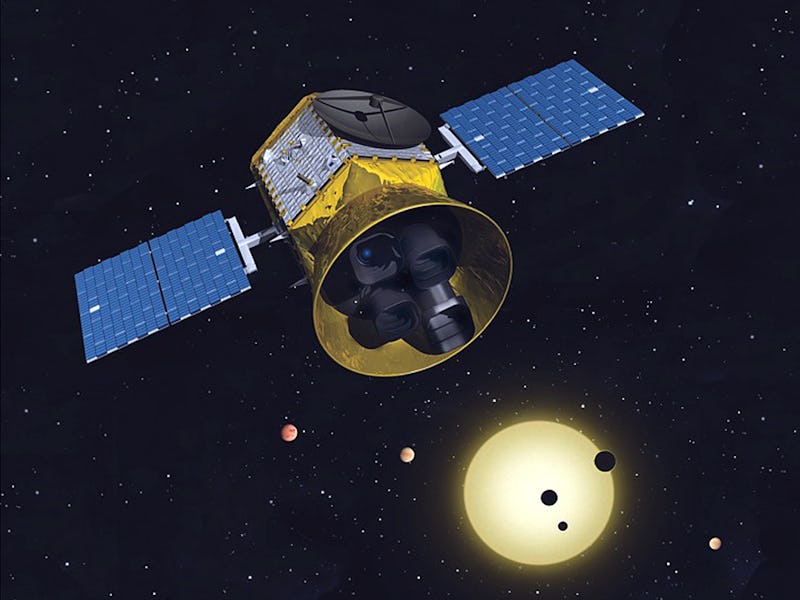Exoplanet-Hunting Satellite Will Launch with Out-of-Focus Cameras
NASA says that it's okay, and the satellite will launch anyways.

NASA’s next exoplanet sleuth will have slightly out-of-focus cameras, but the space agency remains confident the Transiting Exoplanet Survey Satellite, or TESS, will still be able to discover distant planets.
The satellite, set to launch in early 2018, will watch thousands of nearby stars for dips in brightness, which are telltale signs of orbiting exoplanets. After exposing the satellite’s four cameras to frigid space-like temperatures of minus 100 degrees Fahrenheit, scientists found that the cameras were a bit mis-focused.
“Recent tests show the cameras on TESS are slightly out of focus when placed in the cold temperatures of space where it will be operating,” NASA told Space News. “After a thorough engineering evaluation, NASA has concluded TESS can fully accomplish its science mission with the cameras as they are, and will proceed with current integration activities.”
NASA scientists expect TESS to reveal some 5,000 new planets. The current estimate is that perhaps one percent of these planets — about 50 — will be Earth-sized, potentially habitable planets. This slight camera mishap may lower these expectations, but not enough to cancel or delay the upcoming launch.
“The TESS team thinks there will be a 10 percent cut in terms of the number of planets that they expect to be able to detect,” Alan Boss, an astronomer with the Carnegie Institution, said at last week’s NASA Astrophysics Advisory Committee.
Although the space agency has not revealed the cause of the focus problems, Boss suggested that a glue used to bond the camera’s light detectors in place may be interfering with incoming starlight.
TESS’s mild focusing mishap is acceptable because the cameras will not actually be taking images of the stars. Instead, they will measure light, a science called photometry. Similar to TESS’s predecessor, the Kepler space telescope, the satellite will observe stars for dips in their brightness. These tiny dips are caused by transiting planets, which temporarily block sunlight from reaching the sensitive cameras.
The Kepler space telescope, TESS's predecessor, has identified seven Earth-sized planets in the Trappist star system. Three of the planets orbit so closely to one another in the system's habitable zone that scientists suspect that primitive life, should it exist -- could "hop' between them.
However, if TESS’s mission was similar to the Hubble space telescope’s, which takes stunning images of distant cosmic objects, the cameras’ focusing issues would likely throw a costly wrench in the mission. That’s what happened with the Hubble: After launching the bus-sized telescope in 1990, NASA scientists found that a misshapen mirror produced fuzzy images, requiring astronauts to visit the Hubble and install a huge corrective lens.
Unless further testing reveals a more serious issue, TESS will launch into Earth’s orbit upon a SpaceX Falcon 9 rocket as early as March 2018, and begin staring at some of the brightest stars in our galaxy.